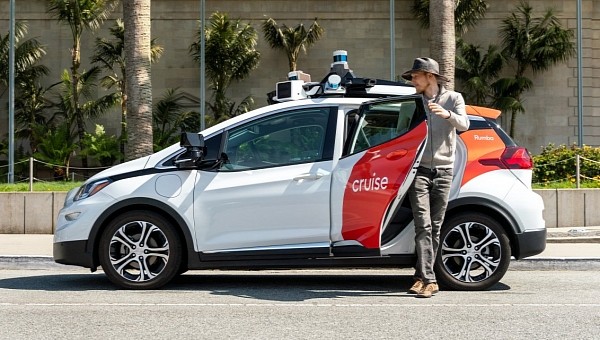GM’s Cruise is progressing with its robotaxi service, conquering new cities and neighborhoods. After expanding the service area in San Francisco to include almost the entire town, Cruise robotaxis are also working daytime hours.
Skeptics might be proven wrong regarding driverless cars, considering the rapid progress many companies are making in automated driving. GM’s Cruise is one of the most advanced, being the first to get a license to operate a commercial service in San Francisco. Recently, the company’s CEO Kyle Vogt boasted about surpassing 500k driverless miles. This was only possible after the company extended its service area in San Francisco to cover the entire city.
Now, Kyle Vogt announced that Cruise would operate its driverless ride-hailing service 24 hours a day. There will be temporary limitations, just as when the commercial service started in SF, but they will eventually be dropped. For instance, the daytime service is only available to Cruise employees, and the daytime service area is still limited. Cruise aims to merge day/night service areas and allow everyone to access the service regardless of time and zone.
Currently, public customers can request a ride between 10 pm and 5 am and pay a base fee of $5 plus $0.90 per mile and $0.40 per minute. The fare is calculated based on the estimated time and distance for the fastest, optimal route. Unlike other ride-hailing services, Cruise doesn’t have surge pricing and will charge its customers the estimated amount even if the time or distance for the ride is longer.
Cruise also operates in Austin and Phoenix, where it follows a similar strategy to the one in San Francisco. It might actually take less time to roll out new features and expand the service in these cities because both are in states with fewer regulatory hurdles than California. Cruise has to be more cautious in San Francisco, where every new feature is first tested on its own employees and only then gradually opens to the public.
Now, Kyle Vogt announced that Cruise would operate its driverless ride-hailing service 24 hours a day. There will be temporary limitations, just as when the commercial service started in SF, but they will eventually be dropped. For instance, the daytime service is only available to Cruise employees, and the daytime service area is still limited. Cruise aims to merge day/night service areas and allow everyone to access the service regardless of time and zone.
Currently, public customers can request a ride between 10 pm and 5 am and pay a base fee of $5 plus $0.90 per mile and $0.40 per minute. The fare is calculated based on the estimated time and distance for the fastest, optimal route. Unlike other ride-hailing services, Cruise doesn’t have surge pricing and will charge its customers the estimated amount even if the time or distance for the ride is longer.
Cruise also operates in Austin and Phoenix, where it follows a similar strategy to the one in San Francisco. It might actually take less time to roll out new features and expand the service in these cities because both are in states with fewer regulatory hurdles than California. Cruise has to be more cautious in San Francisco, where every new feature is first tested on its own employees and only then gradually opens to the public.
Service areas are split day/night, will eventually merge: pic.twitter.com/tmmFNpttgI
— Kyle Vogt (@kvogt) November 16, 2022







